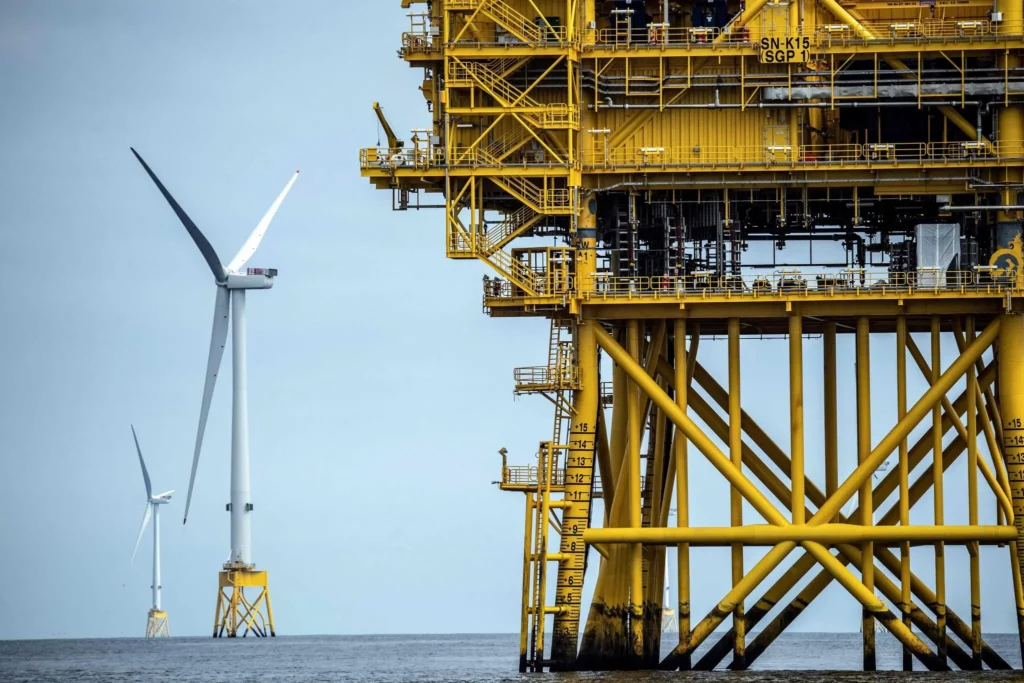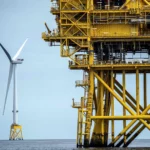With a collective commitment to combat climate change and reduce dependence on fossil fuels, European nations are harnessing the power of the North Sea to propel the offshore wind industry forward. This strategic shift aims to transform Europe’s oil and gas hub into a major source of renewable energy, with substantial investments and ambitious targets driving the expansion of offshore wind generation capacity. The remarkable collaboration among European leaders and the potential of the North Sea offer a promising path toward energy independence and a greener future.
Unleashing the Potential of Offshore Wind
The North Sea, renowned for its bustling shipping lanes and oil rigs, is now set to witness a wave of renewable energy investments. At a recent summit held in Ostend, Belgium, leaders from nine European countries pledged to quadruple the existing offshore wind generation capacity in the North Sea and neighboring waters by 2030, with a tenfold increase by 2050. This ambitious commitment aims to significantly reduce carbon emissions and minimize reliance on fossil fuel imports, particularly from Russia.
A Unified Front for Sustainable Energy
Notably, the summit included both the United Kingdom and Norway, despite their non-membership in the European Union (EU). Geographically strategic, these countries possess immense wind energy potential and are key players in the offshore wind sector. The collaboration of all participating countries, including EU members such as Germany, the Netherlands, Denmark, France, Ireland, and even non-North Sea coastal country Luxembourg, highlights the collective vision of transforming the North Sea into the world’s largest green energy plant.
Driving Factors behind Offshore Wind Expansion
Europe’s pursuit of offshore wind power is driven by two key factors: growing concerns about climate change and a desire for energy independence. Recent events, such as Russia’s attempts to leverage gas supplies as a political weapon, have heightened the urgency to diversify energy sources. The North Sea region offers favorable conditions for offshore wind farms, characterized by strong winds and shallow waters, making it an ideal location for turbine installations. Northern European countries, including Denmark and the UK, have pioneered the offshore wind industry and already generate a significant portion of their electricity from wind power.
Fostering Economic Growth and Transition
Investing in offshore wind power will not only accelerate the transition to clean energy but also bolster economic growth and job creation. The industry currently employs approximately 300,000 people in Europe. While concerns persist about the potential impact on petroleum industry centers, such as Stavanger in Norway and Aberdeen in Scotland, the offshore wind sector is providing employment opportunities for workers transitioning from the oil and gas sector to renewables.
Overcoming Challenges for a Sustainable Future
Meeting Europe’s ambitious targets for offshore wind capacity expansion poses challenges. Lead times for project development and construction can exceed five years, and scaling up production to meet demand requires substantial investment. Turbine manufacturers, including Vestas Wind Systems and Siemens Gamesa Renewable Energy, face financial constraints and inflationary pressures that may impact their ability to rapidly increase production. Additionally, the construction of large-scale offshore wind structures, including planned artificial islands, raises environmental concerns that need to be addressed for sustainable development.
Seizing the Opportunities for Energy Collaboration
The development of offshore wind farms in the North Sea offers more than just clean energy generation. It presents an opportunity for innovative energy trading and collaboration to balance the intermittent nature of renewables. The existing network of high-capacity cables crossing the North Sea enables the efficient flow of electricity between countries, providing flexibility and reliability in the energy system. As renewable sources continue to grow, these interconnectors will play a crucial role in optimizing power generation and distribution.
A Glimpse into the Future
The North Sea’s transformation into an offshore wind energy hub is paving the way for pioneering projects and cutting-edge innovations. The planned artificial island, Princess Elisabeth Island, near the Belgian coast, exemplifies this vision. Serving as a central hub for power cables from nearby wind farms, this artificial island showcases the potential for a network of interconnected offshore energy hubs across the North Sea. Moreover, other initiatives, like Copenhagen Infrastructure Partners’ plan for an island off Denmark, demonstrate the integration of technologies for producing clean fuels like hydrogen.








